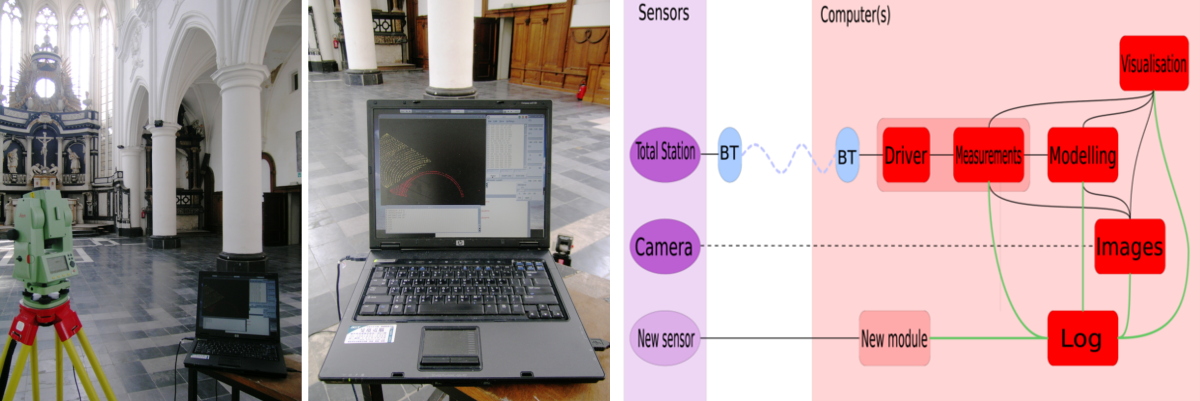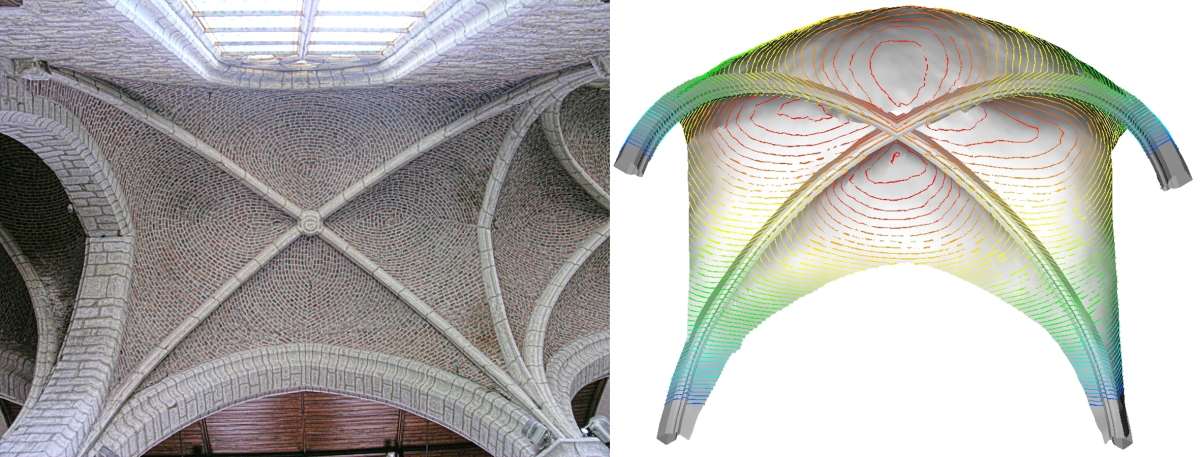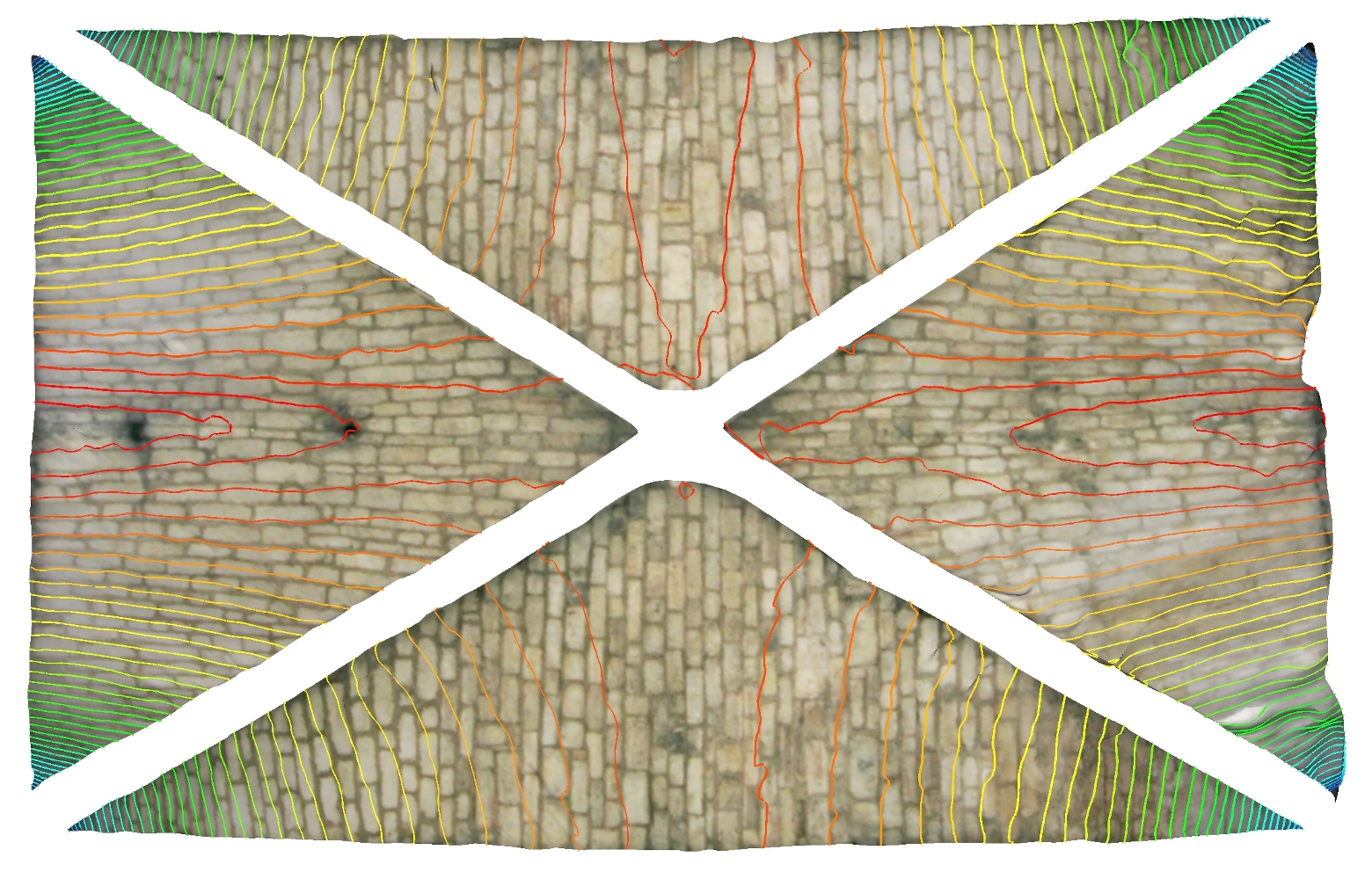
Pierre Smars, 2007
Project funded by the National Science Council
Various techniques are available to survey Historical Buildings: traditional hand measurements, digital photogrammetry, reflectorless total stations, laser scanners..
In practical situations, the choice of a single technique is rarely the most efficient way to survey a building. Without intention to generalise, one could state that hand measurements are slow and require possibility of contact with the elements being measured, that photogrammetry requires too many photographs when interior spaces are surveyed and that laser scanner are very expensive.
But any given technique, in certain circumstances (objects and requirements) can offer some benefit (cost, speed, accuracy...). It would be as wrong to say that today hand measurements are outdated than laser scanners are just able to produce impressive point clouds.
In consequence, hybrid methods combining various techniques to produce efficiently accurate models appeared and their interest is now well recognised. In general, three roads open to higher quality surveys: (1) the improvement of existing techniques (better sensors, software, methodologies...), (2) the integration of existing techniques (hybrid methods) and (3) the development of new techniques.
Our intention is to make steps on the two first roads. The aims of the present project is therefore to develop software tools facilitating total station measurements through (1) real-time control of the measurements, (2) parametric modelling of architectural elements and (3) use of digital photographs. Those tools will be designed so as to be easilly improvable and extendable.

Left: Our Lady's church in Leuven, July 2007 (collaboration with professor K. De Jonge, K.U.Leuven, Belgium). Right: Software Modules.
Real-time control is very useful because the construction of models from limited set of measurements requires the formulation of hypotheses (like the flatness of a wall is flat or the regularity of an arch) and the best moment to test those hypotheses is when the surveyor is in direct contact with the object and has the possibility to adapt his measuring actions accordingly.
The idea behind parametric modelling is that it is important to keep control over what is measured and, as the number of measurements is therefore limited (time being a concern), hypotheses need to be made on the parts which are not measured.
Tools will also be provided to use digital photographs: to quickly orient them and to use them to control the conformity of the model (test hypothese) and assist the total station during the model construction phase.
Real-time control, parametric modelling and use of digital photographs are complementary.

Saint-Catherine church in Humelghem, July 2007 (collaboration with professor K. De Jonge, K.U.Leuven, Belgium)

Our Lady's Church in Leuven, July 2007 (collaboration with professor K. De Jonge, K.U.Leuven, Belgium)